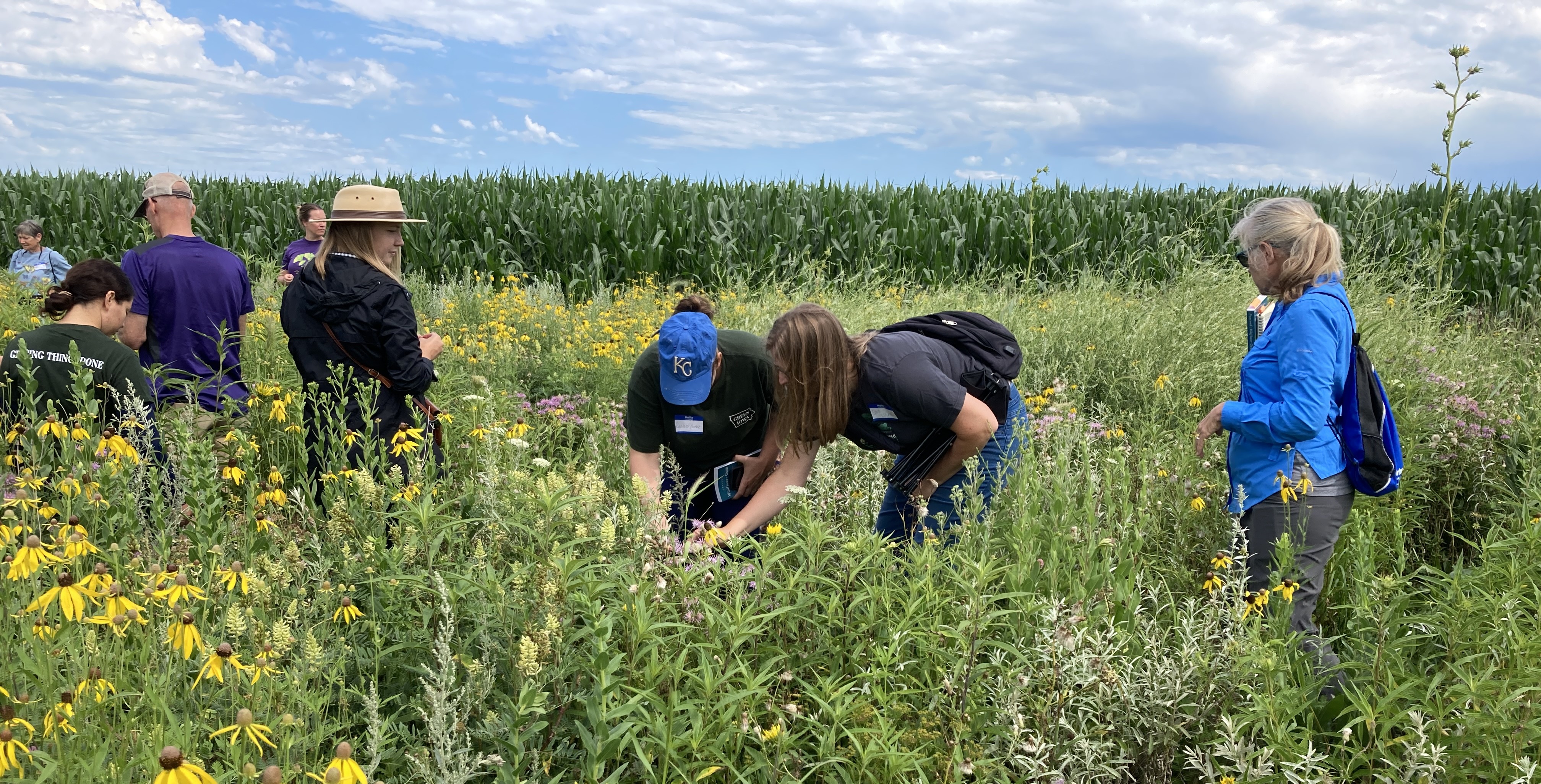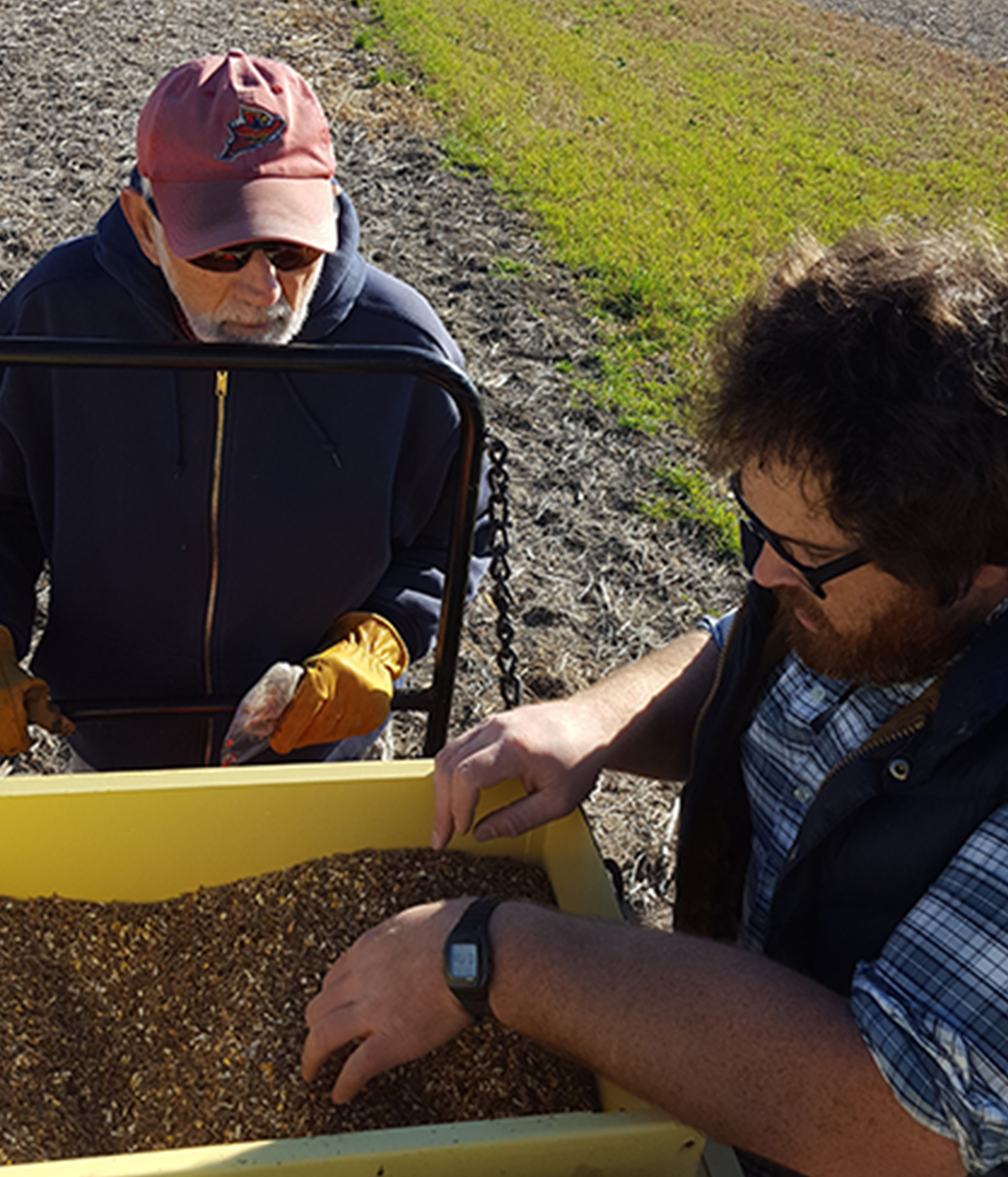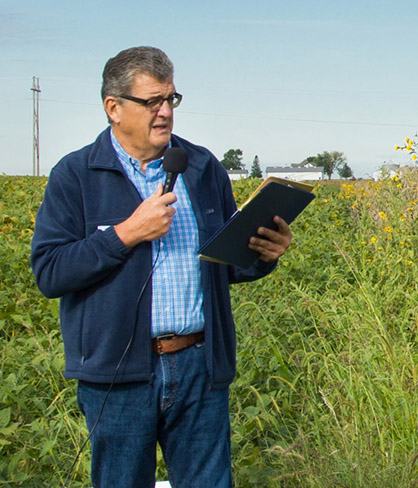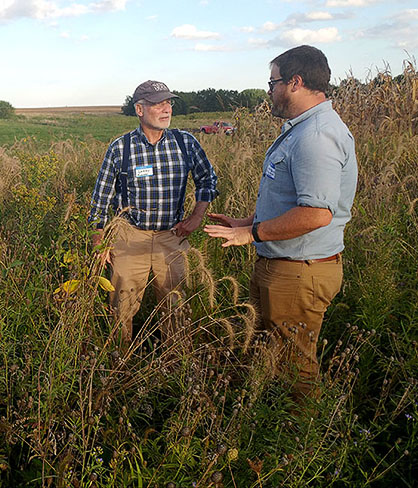Prairie Strips: What Farmers Are Saying

The Kramer Farm
Location: Black Hawk County
Watershed: Middle Cedar
Date planted: 2015/2016
Acres: 2.41
Seed mixes: Pollinator
From Jerry Kramer:
"A pheasant flew out of a prairie strip last fall. That was the first time in years I’ve seen one on either of our farms. The three-year-old planting has become especially colorful; it’s interesting walking through it and seeing the spectacular insect life."
"On the practical side, the two strips have successfully mitigated a soil erosion issue."

For Jerry Kramer, planting prairie on his farm is a way to connect with the past as well as with the natural world. As a boy growing up on his family farm north of Waterloo, IA, he can recall that one of his fathers favorite plants were shooting stars, a forb with vivid colors of purple and white, that grew on a unplowed portion of the farm, “I remember three or four times we made this little march out or rode the tractor out there when he was putting in crops to see if we could find the shooting stars. That was a big deal.” Reintroducing native grasses and forbs to 80-acres of corn and soybean farmland via prairie strips have also seen an increase in wildlife, “A pheasant flew out of a prairie strip last fall. That was the first time in years I’ve seen one.” Jerry believes that the connections between past and present and between nature and people are inherently tied together. Planting prairie can offer a small glimpse of what has been lost to intensive agriculture, while offering a vision of a future that includes both productive farming and sustaining habitat.
Born in 1937, his childhood on the farm reflected the time of rural life in the Midwest: walking through the fields to the one room schoolhouse, milking the cows, and spending time with grandparents, aunts and uncles who lived nearby. The farm stayed in the family through both hard times and good, such as his father’s passing when he was thirteen. Jerry’s mother, Irene, was profiled by Wallace Farmer in 1959 where she comments upon the group effort required to farm, “Fortunately, I’ve always been healthy and energetic and the boys have always wanted to be farmers. For four years, my youngest brother, Harlan Sage, helped us operate the farm. Then another brother, Clinton Sage, farmed for us on grain shares.” After attending high school in Waterloo Jerry left the farm for college in Ames at Iowa State University, then went into the army and spent time in Fort Huachuca, AZ before returning to school, earning a degree to teach history from the University of Northern Iowa. Jerry and his wife JoAnn, who both grew up in Bennington Township, taught history and physical education, respectively, in Waterloo. Eventually Jerry and JoAnn purchased their families farms, 80 acres in Jerry’s case and 160 acres from JoAnn’s. Despite working full-time as teachers, they both remained involved in the farm operations through cash renting to area farmers and maintaining a small flock of sheep.
Over time, they have both become more interested in conservation. Jerry’s particular interest in prairie stems from being involved with maintaining the Bennington Township Cemetery remnant prairie, located close to the Kramer Family farm. UNI professor and former Director of the Tallgrass Prairie Center (TPC) Daryl Smith took students out to the remnant prairie and conducted prescribed burns at the site as well. “I was really interested in that,” Jerry comments. He worked with TPC staff to install prairie strips to address erosion on the farm and to introduce habitat. “Our renter went along with it,” Jerry notes, pointing to the relationships required to conduct conservation measures, even on ground he owns, “We have a great renter and he goes along with my crazy ideas.”
Prairie strips is a conservation practice that establishes native, perennial vegetation in row crop fields. A study conducted by the ISU STRIPS team at the Neal Smith National Wildlife refuge found “disproportional benefits” to converting 10% of row-cropped fields to prairie, including: reducing sediment movement by 95%, phosphorus loss by 90%, and nitrogen loss by 85%. Funding for strips is available through the Conservation Reserve Program (CP-43), and is eligible for cost share. Jerry has seen practical benefits from planting prairie, “The two strips have successfully mitigated a soil erosion issue.” He also points out that strips are far from perfect and need to be actively managed, citing some issues with weeds in the strips.
Beyond the practical application of prairie strips, Jerry notes that planting prairie can’t fully bring back Iowa’s lost ecosystem, “Now, what I’m creating isn’t going to be anything like that. It’s new and I guess you just hope that when you’re not around yourself that it will be there. Maybe people might think about it - where it came from and so forth.” Jerry has had neighbors ask him what he’s doing planting prairie on seemingly perfectly good farm ground when seen at 55 mph on the road. He says he’s had success in swaying them to try something similar. One local farmer enrolled an oddly shaped piece of land that was difficult to work with big equipment in a CRP program. Another even converted 40 acres to perennial vegetation to serve as pollinator habitat, which Jerry describes as, “beautiful.” While less than 1% of the original tallgrass prairie ecosystem remains, prairie remnants offer a glimpse of Iowa’s natural heritage. By bringing back prairie on his farm, Jerry Kramer is attempting to combine a passion for conservation along with his family heritage of farming. Jerry says, “I think it’s going to happen little bits at a time.”
The Luze Farm
Location: Benton County, near Dysart
Watershed: Middle Cedar
Date planted: Spring 2015
Acres: 9
Seed mixes: Economy (30:70 forb to grass), Diversity (50:50 forb to grass), Pollinator (60:40 forb to grass)
From Randy Luze:
"We put these strips into tillable crop land to slow water, and we’re already noticing less erosion. We’ve been happiest with the economy and diversity mixes; they’ve done the best crowding out weeds and are the easiest to maintain. The strips were set up to work with our equipment, and that’s gone well. A benefit for our neighbors: The strips provide habitat for pheasant hunting."

The Roadman Farm
Location: Grundy County
Watershed: Middle Cedar
Date planted: Fall 2016, Spring 2017
Acres: 11
Seed mix: Pollinator (60:40 forb to grass)
From Larry Roadman:
"Planting prairie expands our family's multi-generational land conservation efforts. It’s given us an opportunity to work and learn in partnership with an awesome team: the Tallgrass Prairie Center; Iowa State University; federal, state, and county agencies; our farm management company (Hertz Farm Management) and our farm operator (the Dudden family)."



